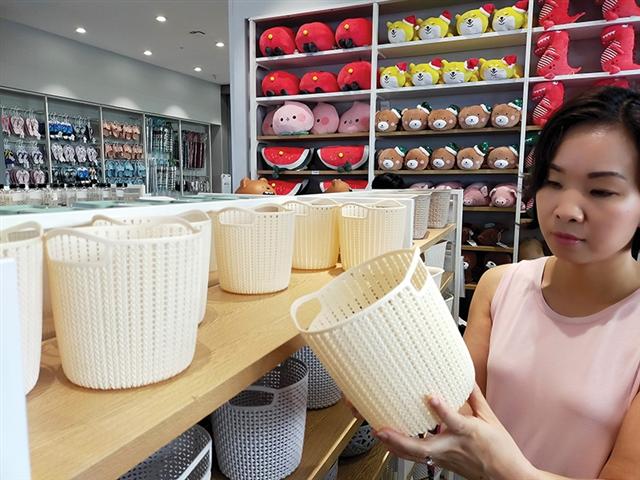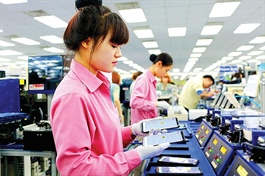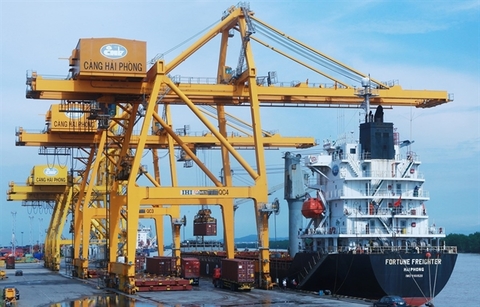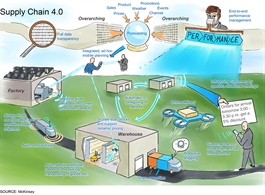Falling in with local consumption habits
Falling in with local consumption habits
Ten years after the Vietnam-Japan Economic Partnership Agreement entered into force in 2009, with import tariffs removed already, Japanese consumer goods suppliers are looking into bolstering their presence in the Vietnamese market amid local and regional competition.

Japanese home appliances and supplies are favoured by locals, photo Le Toan
|
Home appliance trader Awa Co., Ltd. is looking for Japanese suppliers of healthcare and beauty products to complement its distribution system as its customers highly appreciate their quality and safety due to the use of natural ingredients. Awa’s director, Tran Duc Hung, said that he wants to “directly negotiate with Japanese suppliers to reduce intermediary costs.”
However, since travel restrictions caused by the pandemic are mostly still in place, going to Japan to find such suppliers in person remains complicated. In addition, “Vietnamese buyers cannot make their decisions through online negotiations,” said Abe Tomofumi, project director at the Japan External Trade Organization (JETRO) Hanoi.
Nevertheless, JETRO’s efforts through events such as the Good Goods Japan 2020 fair, which is taking place in Hanoi from August 24 to October 30, can help Vietnamese traders get a taste of many available product groups, including consumer and household goods, cosmetics, and baby supplies, even though orders will have to wait until the pandemic is under better control.
Japanese goods have earned their fair share of respect among Vietnamese consumers and have a reputation for being durable and flawless. According to the General Statistics Office (GSO), last year Vietnam’s retail market reached a value of $162 billion, a 12.7 per cent increase on-year.
Nonetheless, COVID-19 has changed local consumer behaviour. A survey conducted by JETRO in mid-June showed that 89 per cent of them prioritised price when making a choice.
Meanwhile, 84.3 per cent of respondents also looked at the overall quality, whereas a product’s features were only important for half of them (52.8 per cent).
Vu Ngoc Tu, CEO of Osaka-based Sakuko Vietnam, is considering using cosmetics as a new magnet to lure customers to supermarkets. In his eyes, the price is “not the only factor” when competing with similar products from Europe, South Korea, and China.
When it comes to Japanese consumer goods, Sakuko is almost dominating the Vietnamese market. With its first retail shop opened in 2011, succeeding the 2009 Vietnam-Japan Economic Partnership Agreement (VJEPA), the company came way before many competitors who were patiently waiting for the agreement’s 10-year period that led to tariff reductions of up to 88 per cent for many types of goods.
However, popular Japanese consumer goods have their price, a weakness when it comes to their competitiveness in the Vietnamese market as JETRO’s survey showed. Therefore, CEO of Viet Han Hair Accessories Nguyen Tien Phan continues to research alternative suppliers to diversify his company’s product range and reach the price level of similar domestic products, which currently come at around 20-30 per cent less.
Vietnam’s retail market is increasingly attractive for Japanese wholesalers and suppliers and its traditional retail channels remain diverse, with 210 commercial centres, over 1,000 supermarkets, around 3,000 convenience stores, and more than 8,400 markets. Besides, modern online channels are becoming more and more popular through the participation of several e-commerce platforms, such as Lazada, Shopee, Tiki, and Sendo.
According to the Ministry of Industry and Trade (MoIT), large foreign retail groups like Lotte, Central Group, and AEON are continuously pressing market penetration and expansion. Meanwhile, some local players like Masan are trying to challenge these foreign groups to get their share of the profitable market.
Le Viet Nga, deputy director of the MoIT’s Domestic Market Department commented, “The rising competition among local and overseas groups in the retail market is only demonstrating its potential.”
In the first eight months of the year, Vietnam’s imports from Japan totalled $12.8 billion, up 3.2 per cent on-year, according to the GSO. Among these imports, baby supplies are becoming increasingly attractive for Vietnamese “as a new trend about the Japanese parenting style emerged in recent years,” JETRO’s Tomofumi said.
Because of their quality and reputation, local consumers who can afford these baby supplies from Japan prefer them over cheaper products from Thailand, China, and South Korea.
Meanwhile, environmentally-friendly cleaning products from Japan enjoy a similar prestige among Vietnamese consumers. However, Tomofumi said that Japanese suppliers “need to pay more attention to the price that end-users have to pay” when competing with domestic alternatives.
According to Tomofumi, Japanese companies who want to be successful in the Vietnamese retail market need to adjust their price policies, be more flexible with product sizes, and provide expiry dates and other crucial information following international standards.
“For example, some cleaning products should be offered in volumes around 200-300ml instead of 500ml to better meet the local demand. Moreover, local consumers need to be convinced that the price they pay equals the value they receive. Only then will Japanese businesses profit from the VJEPA.”












